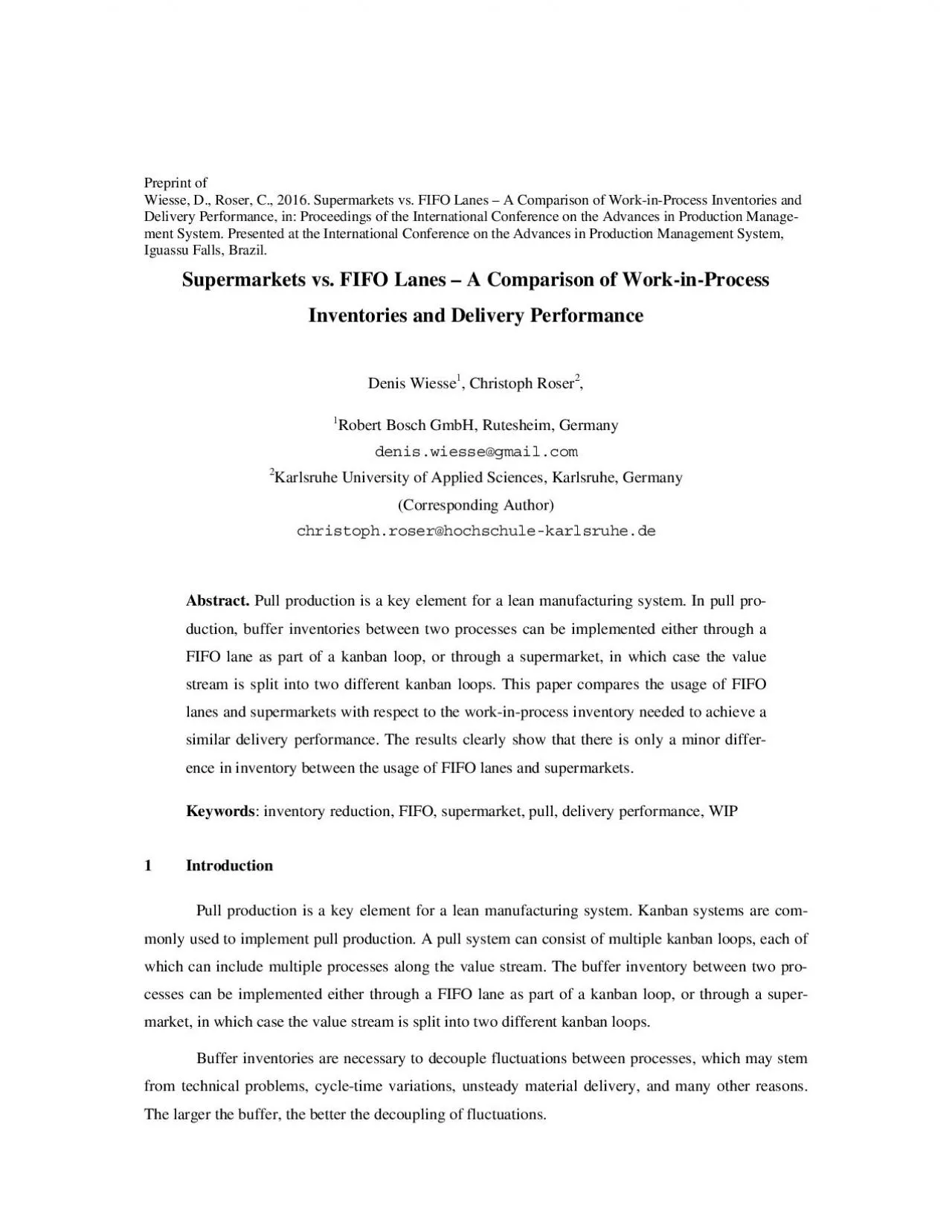PDF-Preprint of Wiesse D Roser C 2016 Supermarkets vs FIFO Lanes
Author : melody | Published Date : 2021-07-04
Yet buffer inventories also cause significant costs Industry usually calculates the cost due to the bound capital sometimes also including storage and handling cost
Presentation Embed Code
Download Presentation
Download Presentation The PPT/PDF document "Preprint of Wiesse D Roser C 2016 Superm..." is the property of its rightful owner. Permission is granted to download and print the materials on this website for personal, non-commercial use only, and to display it on your personal computer provided you do not modify the materials and that you retain all copyright notices contained in the materials. By downloading content from our website, you accept the terms of this agreement.
Preprint of Wiesse D Roser C 2016 Supermarkets vs FIFO Lanes: Transcript
Download Rules Of Document
"Preprint of Wiesse D Roser C 2016 Supermarkets vs FIFO Lanes"The content belongs to its owner. You may download and print it for personal use, without modification, and keep all copyright notices. By downloading, you agree to these terms.
Related Documents














